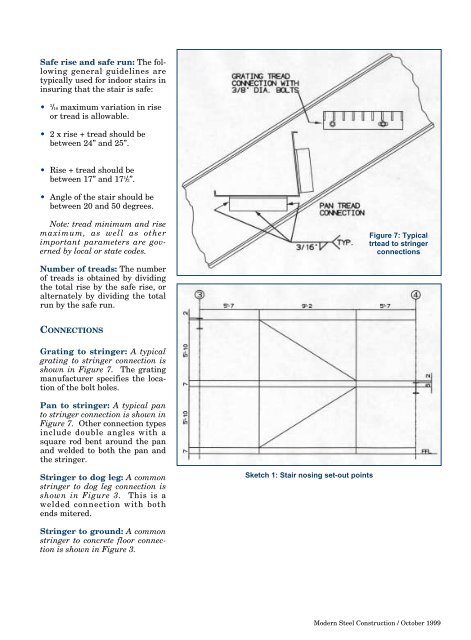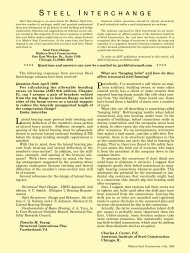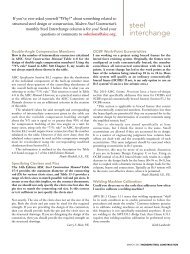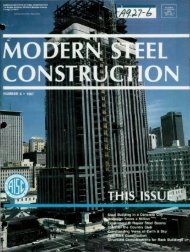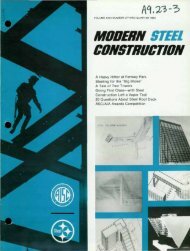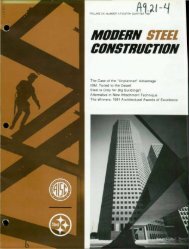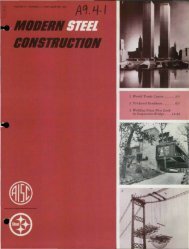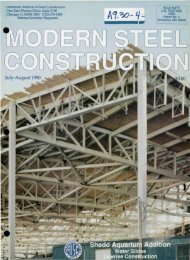DETAILING STAIRS: - AISC
DETAILING STAIRS: - AISC
DETAILING STAIRS: - AISC
You also want an ePaper? Increase the reach of your titles
YUMPU automatically turns print PDFs into web optimized ePapers that Google loves.
Safe rise and safe run: The following<br />
general guidelines are<br />
typically used for indoor stairs in<br />
insuring that the stair is safe:<br />
3 /16 maximum variation in rise<br />
or tread is allowable.<br />
2 x rise + tread should be<br />
between 24” and 25”.<br />
Rise + tread should be<br />
between 17” and 17 1 /2”.<br />
Angle of the stair should be<br />
between 20 and 50 degrees.<br />
Note: tread minimum and rise<br />
maximum, as well as other<br />
important parameters are governed<br />
by local or state codes.<br />
Number of treads: The number<br />
of treads is obtained by dividing<br />
the total rise by the safe rise, or<br />
alternately by dividing the total<br />
run by the safe run.<br />
CONNECTIONS<br />
Grating to stringer: A typical<br />
grating to stringer connection is<br />
shown in Figure 7. The grating<br />
manufacturer specifies the location<br />
of the bolt holes.<br />
Pan to stringer: A typical pan<br />
to stringer connection is shown in<br />
Figure 7. Other connection types<br />
include double angles with a<br />
square rod bent around the pan<br />
and welded to both the pan and<br />
the stringer.<br />
Stringer to dog leg: A common<br />
stringer to dog leg connection is<br />
shown in Figure 3. This is a<br />
welded connection with both<br />
ends mitered.<br />
Stringer to ground: A common<br />
stringer to concrete floor connection<br />
is shown in Figure 3.<br />
Sketch 1: Stair nosing set-out points<br />
Figure 7: Typical<br />
trtead to stringer<br />
connections<br />
Modern Steel Construction / October 1999


